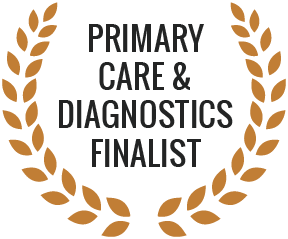Navigating an Occupational Health Journey – Guide for HR Professionals
We have been supporting companies with occupational health for 20 years. As HR professionals, you know that absence from work due to sickness costs the UK billions a year. You also know that wellbeing and stress management improves absenteeism rates in our workplaces.
HR departments who work with this knowledge at the forefront of their approach have a huge impact on the overall health of their company. But even HR professionals with the best intentions can struggle when faced with occupational health challenges, and especially ones that require an external assessment.
We use a unique approach to occupational health that puts wellbeing and communication central to the process. We hope this guide helps in the first instance.
Sporadic absences & sick leave
This is a common issue faced by companies. An employee is not on long-term sick leave but regularly takes sick leave for various ailments or the same issue. In our experience, these employees come under the following categories:
- Emotional difficulty exacerbated by work or home-related stresses
- Bullying at work manifesting as work-related stress
- Poorly managed chronic illness that isn’t receiving the correct level of support
In this case, an occupational health assessment can help to properly identify the challenges faced by the employee and highlight measures that can help ensure their condition is properly managed. An external assessment with an experienced doctor such as our head doctor, Dr Enam Abood can help ensure everyone is on the same page and the employee feels well-supported.
Dr Abood recalls two case studies;
“I once had a case of a young woman who had recently had hip surgery. She was keen to get back to work but was not able to walk the hill to the station because there was no aftercare, from pain management to physiotherapy. Simply identifying this obstacle was enough to get her back to work full-time which is what she really wanted.
I have also seen a case of an employee who took multiple days off for headaches and migraines, but they were really suffering from acute depression after a relationship break-up. By helping her company support her with a few simple measures and talking therapy, her absences reduced dramatically, and she returned to the job she enjoyed as a productive and happy team member.”
Long-term sick leave & returns to work
When companies are supporting someone on long-term sick leave, we have found that communication can sometimes break down. The employee may feel pressured to return, or to leave employment, and HR professionals can sometimes be unsure about the right way to discuss things with the employee, resulting in a bit of a stand-off.
The key advice here is to keep communication channels open and remain in regular contact as appropriate. When the conversation moves to a return to work, you will benefit hugely from an occupational health assessment to look at a few key areas:
- Is the role still suitable? If not, is there another more suitable one available?
- If so, what reasonable adjustments need to be made?
- What working hours and conditions would work best for the employee?
- What additional support may be required?
These conversations of course must happen between HR and the employee but we find that independent assessments can get to the core of any health-related obstacles and therefore present more long-lasting solutions. It also means that the doctor can review with the employee periodically and make suggestions to ease them back into their role and working life.
How do I refer someone for an occupational health assessment?
Anisa Goshi who is our Corporate and External Relations Director helps HR professionals with gaining access to our occupational health services. Here is her step-by-step guide:
Step 1: Communicate with the employee
Try to communicate before things become difficult and try to intervene early. This will help the process enormously. Explain that you have been looking at ways to support them better and would like to suggest an occupational health assessment to look in detail at what the company can do better in terms of any adjustments and support. You will ideally need the employee’s buy-in and this framing is the best way to achieve that.
Step 2: The Occupational Health referral form
We will send this to you following your expression of interest in an occupational health assessment. The form will ask for an overview of the situation, details of absences, current adjustments, and what is the aim of the assessment. Anisa will then call you to discuss the points and any other matters.
Step 3: The appointment
We make an appointment to suit the employee with our occupational health doctor, Dr Enam Abood. This appointment lasts for 90 minutes and includes a detailed assessment and report.
Step 4: The report
The report is shared first with the employee who has 3 days to highlight any factual corrections to the occupational health report. Following, the report is shared with the employer.
Step 5: Post-assessment catch-up
Anisa organises another call to go over the report and discuss any queries from HR and follow-up points if required.
We offer a range of occupational health services that include sick leave verification, stress management, wellbeing in the workplace and psychological assessment. We also have an excellent team of therapists who can provide workshops & seminars on stress management, mindfulness, & other work-related health issues.
Email [email protected] to start a conversation about bespoke occupational health services for your company.






